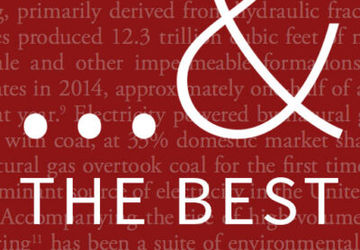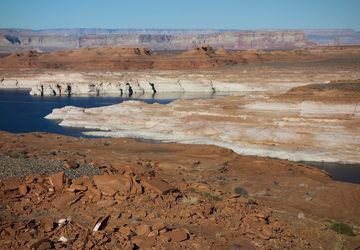Camden Burk (he/him)
Hometown: Northport, NY
Major: Earth Systems ‘25
Internship: California Energy Commission, Office of Commissioner Noemi Gallardo
Camden Burk discusses his projects and work environment at the California Energy Commission
This summer, I have the incredible opportunity to work with the California Energy Commission (CEC) in the office of Commissioner Noemí Gallardo. After a spring internship through the Stanford in Washington program, and a scattered, week-long break split between seeing my friends in New York and my family in New Hampshire, I really didn’t have any time to come up with expectations for the position. I was certainly excited to learn more about the CEC, and the Commissioner’s policy areas, but I never really took the time to think about what my position would be like. Although I am still only a month in, I can safely say it has been far better than I could have hoped for.
The biggest highlight of my work so far has simply been the people. Over the course of my fellowship, I have had the opportunity to meet so many amazing people, all of whom care deeply about, and are intimidatingly knowledgeable on, their issue areas. As someone who is always more than a little terrified by the looming threat of climate change, it is comforting to see so many good people working to make the world better. Further, I have received a tremendous amount of support from my mentors, both at the CEC and at Stanford. Commissioner Gallardo and her interim advisor Andrea McGary have been immensely supportive, frequently introducing me to new staff at the commission and genuinely including me in important policy discussions; from day one, they made me feel like a valued member of the team, and it has made me much more comfortable engaging with the subject matter. Meanwhile back on campus, Professor Bruce Cain is always encouraging me to keep learning and exploring, for which I am extraordinarily grateful. Finally, getting to work with my fellow energy fellow, Valeria, has been a great experience, and I have already learned so much from her.
I think the moments that stand out the most are the moments I have gotten to spend with the team in person. I am on campus this summer, so Sacramento is quite a trek, but I have still made the journey on a number of occasions to get to spend more time getting to meet the team. (I will point out that I take a route through the Altamont Pass wind farms, which is an incredible sight. It also has no tolls.) Being with everyone in person simply helps build connections in a way that Microsoft Teams can’t, and has helped me get to know my team both personally, and professionally. A couple of weeks ago, Commissioner Gallardo, Andrea, Valeria, and I visited CAISO (California Independent System Operator) headquarters (see photo) to better understand their operations and the state of the energy grid with the ongoing transition away from fossil fuels. We carpooled together from the Sacramento office, and had the chance to simply chat on the way. Something about the mix of jokes about the loaf of bread I had brought from a farmers’ market and serious discussions on California’s energy transition helped bring policy-makers down to earth for me in a new way.
On that same trip, I was able to see the CAISO control room, which perhaps best exemplifies the complexity of the energy space. At this facility, there is a massive set of screens displaying all of the information needed to properly run the electrical grid for the state of California–the grid frequency, weather across the state, interstate energy transmission, and much more, all updated every four seconds. Seeing everything happening live was awesome, and I felt a new measure of confidence looking at that board and understanding a not-insignificant amount of what was being shown.
My favorite moment, however, came with one of my first real projects of the position. One of Commissioner Gallardo’s key lead areas is the development of “Lithium Valley,” a massive effort to increase extraction of lithium in the Salton Sea region of Southeastern California. Lithium is a vital material for the energy transition, being the core component of lithium ion batteries in many energy storage technologies and electric vehicles, and the Salton Sea reserves have enough to satisfy a significant amount of future global demand. However, several challenges remain to be addressed before this resource can be responsibly harvested. One of the first assignments assigned to Valeria and me was to review a report on this subject and prepare a list of our recommendations for the commissioner. Taking a deep dive into the subject was fascinating, and I learned a great deal over the course of the project. When we finally got to discuss our findings, we had a thorough and informative discussion, and I really loved hearing both of their perspectives and seeing how they differed from my own. Actually sitting down and discussing this policy area just felt amazing and I had so much fun doing it.
Currently, I am working on several projects. One is a continuation of my work on Lithium Valley, focusing on the perspectives of communities around the proposed development sites. This is a poorer community, already suffering negative health effects from the rapid drying of the Salton Sea, and it is essential that they receive real benefits from the massive influx of money and resources from lithium development. The Commissioner and her team (including me!) will be visiting the area at the end of August, so I am working to coordinate with the various local governments to set up meetings to discuss their priorities. Commissioner Gallardo also just appointed a lead advisor on Lithium Valley, and I expect to work on other projects with him over the next few weeks. The development of California’s lithium resources can play a vital role in the clean energy transition, but it is vital that we take care to do it right and use this as an opportunity to better the community as well.
Valeria and I are also working on a project around community benefit agreements (CBAs), working to better understand what qualifies as a CBA and establish guidelines for how developers should go about the process of creating one. These are only two of the many projects I am working on.
One of the big things that has surprised me is the huge number of positions that exist in the energy space–there are so many different jobs across so many different organizations, all of which require their own unique set of skills and knowledge. What that means from a practical perspective is that it is okay to follow your heart in choosing a career: there are hundreds, if not thousands of different ways to make a difference in advancing climate mitigation efforts. There is truly a niche for everyone in energy, so don’t be afraid to explore until you find something that works. And if you are just starting to consider a career in the energy space, take the time to look around, because we will need everyone we can get.



